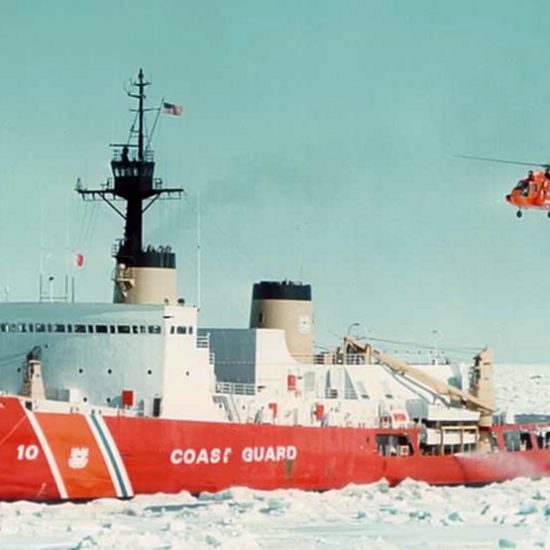
Ron Holmstrom ~ When the Alaska Film Incentive Program was introduced, major production companies across the nation took notice. Since Alaska had one of the most attractive film programs in the world, we began to see large-scale productions filming here.
The first two feature films to take advantage of the state’s film credit opportunity enabled hundreds of Alaskans to find work. Millions of dollars poured into our economy as a result. The presence of these two large-budget motion pictures, ‘Big Miracle’ and ‘The Frozen Ground,’ inspired many Alaskan entrepreneurs to begin to develop new support services for this unique industry.
Even with Alaska’s great incentive program, there was still much to be done to make Alaska more attractive than other places with comparable programs. To film a large-scale movie here, the producers had to bring nearly everything with them: portable dressing rooms, make-up and wardrobe trailers, truckloads of equipment and the technicians needed for specific, highly technical film positions. The producers also lacked a real sound stage, a completely sound-proof building at least 40,000 square feet in size and with a 35 foot or higher ceiling. Alaskans jumped at the opportunity. Large sound stages got designed; plans were made for local motion-picture equipment houses; portable dressing rooms were constructed; film crew technical training began in earnest.
Then a curious thing happened. ‘Big Miracle’ actor Ted Danson made some sort of disparaging remark about the state’s oil industry, and one of our legislators deemed this a threat to Alaska’s signature industry, oil. Then Representative, now Senator Bill Stoltze introduced legislation to stop the Alaska film industry. In the very next session, the legislature formed a committee to study the film industry and re-write the incentive program.
The re-write was said to be more attractive for the hiring of an Alaskan cast and crew. It drastically reduced the Above-the-Line incentives (which include all actors, directors, producers and writers) from 30% to a mere 5%. This change meant that at least 50% of any motion picture’s budget would be mandated to employ Alaskans. Sounds good. Yet to offset the high salaries needed to get top industry talent, since we have no local Alaskan movie stars, top directors, producers, nor writers here, these heralded “improvements” virtually hobbled the program in its tracks.
Some of us with actual motion picture experience protested that these changes would end the film industry and cinematic efforts in Alaska. When we presented these facts to the state legislature, we were ignored. Advocacy from top tier motion picture producers also fell upon deaf ears. The only people in Alaska who discerned the consequences of the new program were local business people and entrepreneurs, who immediately stopped development of the desperately needed infrastructure. Consequently, we now have not had a major production here in over three and a half years.
Since the purportedly “new-and-improved” program has made it impossible to compete with the film credit programs of other states and countries, the only projects which will shoot in Alaska now are the so-called ‘reality’ shows, which spend very little, hire few locals and realize huge profits from their TV broadcasts and re-runs. And the occasional basement-budget film might benefit, too, but provide few local jobs and not much money into the economy.
Fast forward to 2015: a $3 billion deficit and oil prices at a dangerous low. Senator Stoltze offers Senate Bill 39 as a remedy: terminate the film tax credit program in its entirety. No compromise, zero negotiation, and ultimately a slap in the face to all professionals in the trade, who embraced the spirit of Alaska and the integrity of the profession.
The multi-billion dollar global film industry can be a huge boon to our troubled economic situation. Resource development and the hospitality and tourism industry make up the lion’s share of our economy, however, film production and technology are a burgeoning field that should be celebrated and supported, too.
The way to get back on the road to success is to listen to the people with film experience. Let them be part of the discussion. Give them a seat at the table in the assessment and to revise a workable film program in Alaska. The momentum, investment, and passion of Alaskans in the movie industry warrant such a policy direction.
Alaska film, technology, and theater industry professionals have echoed over the last five years that movies, videos, television shows, and documentaries, although they may not be a panacea to the state economic recovery, are in a very tangible way a golden egg of income that benefits the state and enriches our communities with new commerce.
The State’s film tax credit program is worth maintaining for that reason alone. Rather than abandoning a budding Alaskan industry, by terminating the program entirely, let’s craft a thoughtful compromise that builds a new economic engine for Alaska.
Ron Holmstrom is a professional actor. He has been in the film industry for over 20 years in Hollywood and then Alaska since 1992. He is a board member of the Seattle Local of SAG-AFTRA, (formerly Screen Actors Guild.) The Seattle Local governs the Pacific Northwest which includes the state of Alaska.
image credit APEonline












Carl Bittner / March 19, 2015
JUNEAU-Senator Bill Stoltze (R-MatSu/Chugiak) has introduced legislation, Senate Bill 39, to repeal the State’s film production tax credit program. Created in 2008, the original film tax credit program authorized $100 million in credits, and was reauthorized in 2013 for $200 million, totaling $300 million. Currently, over $170 million in film tax credits remain authorized.
“Given the current budget situation we are facing, how can we possibly justify not putting this money towards our critical services such as education, transportation and public safety?” said Senator Stoltze. “As shown by recent audits, the reality of this program is that the State is paying millions to out-of-state film crews to attract these productions to our state while we are getting little or no revenue in return.”
Over the program’s life, almost $75 million in tax credits have been awarded or approved. Similar to oil tax credits, these film tax credits have been applied against state tax revenues. However, a key difference between oil and film tax credits is the film industry’s tax liability pales in comparison to the oil industry.
“I commend Governor Walker for starting to rein in the program, but we need to give him some muscle by removing this from the statutes,” said Senator Stoltze. “If the state continues down the path of giving away more in tax breaks than collected in revenues, it would not only be unsustainable, but also blatantly irresponsible.”
SB39 was referred to the Senate Labor and Commerce and Finance Committees. It is scheduled for its first hearing this Thursday in the Labor and Commerce Committee at 1:30pm in the Beltz Room of the Alaska State Capitol.
For more information, please contact Daniel George in Senator Stoltze’s office at (907) 465-4958.
/
Ron Holmstrom / March 25, 2015
The only audit of the Alaska film incentive program actually revealed that for every 1 dollar spent, there was a 2.1 dollar return.
Also contrary to the above post, film productions actually hire as many Alaskans as they possibly can. The companies, in most cases, can get 100% of salaries of Alaskans incentivized by the program. So, it would be very bad arithmetic for producers to fly up expensive crew members and actors, feed them, house them and provide per diem. Anyone who knows how film budgets work, knows that they jump to hire qualified local talent. It is why, as Alaska crew people have become more experienced, their numbers have increased with every single production filmed here.
You are entitled to your own opinion, but not your own facts. I stand by every word of what I wrote.
/
Carl Bittner / March 19, 2015
JUNEAU-Senator Bill Stoltze (R-MatSu/Chugiak) has introduced legislation, Senate Bill 39, to repeal the State’s film production tax credit program. Created in 2008, the original film tax credit program authorized $100 million in credits, and was reauthorized in 2013 for $200 million, totaling $300 million. Currently, over $170 million in film tax credits remain authorized.
“Given the current budget situation we are facing, how can we possibly justify not putting this money towards our critical services such as education, transportation and public safety?” said Senator Stoltze. “As shown by recent audits, the reality of this program is that the State is paying millions to out-of-state film crews to attract these productions to our state while we are getting little or no revenue in return.”
Over the program’s life, almost $75 million in tax credits have been awarded or approved. Similar to oil tax credits, these film tax credits have been applied against state tax revenues. However, a key difference between oil and film tax credits is the film industry’s tax liability pales in comparison to the oil industry.
“I commend Governor Walker for starting to rein in the program, but we need to give him some muscle by removing this from the statutes,” said Senator Stoltze. “If the state continues down the path of giving away more in tax breaks than collected in revenues, it would not only be unsustainable, but also blatantly irresponsible.”
SB39 was referred to the Senate Labor and Commerce and Finance Committees. It is scheduled for its first hearing this Thursday in the Labor and Commerce Committee at 1:30pm in the Beltz Room of the Alaska State Capitol.
For more information, please contact Daniel George in Senator Stoltze’s office at (907) 465-4958.
/
Ron Holmstrom / March 25, 2015
The only audit of the Alaska film incentive program actually revealed that for every 1 dollar spent, there was a 2.1 dollar return.
Also contrary to the above post, film productions actually hire as many Alaskans as they possibly can. The companies, in most cases, can get 100% of salaries of Alaskans incentivized by the program. So, it would be very bad arithmetic for producers to fly up expensive crew members and actors, feed them, house them and provide per diem. Anyone who knows how film budgets work, knows that they jump to hire qualified local talent. It is why, as Alaska crew people have become more experienced, their numbers have increased with every single production filmed here.
You are entitled to your own opinion, but not your own facts. I stand by every word of what I wrote.
/
Ron Holmstrom / March 25, 2015
The only audit of the Alaska film incentive program actually revealed that for every 1 dollar spent, there was a 2.1 dollar return.
Also contrary to the above post, film productions actually hire as many Alaskans as they possibly can. The companies, in most cases, can get 100% of salaries of Alaskans incentivized by the program. So, it would be very bad arithmetic for producers to fly up expensive crew members and actors, feed them, house them and provide per diem. Anyone who knows how film budgets work, knows that they jump to hire qualified local talent. It is why, as Alaska crew people have become more experienced, their numbers have increased with every single production filmed here.
You are entitled to your own opinion, but not your own facts. I stand by every word of what I wrote.
/
Ron Holmstrom / March 25, 2015
The only audit of the Alaska film incentive program actually revealed that for every 1 dollar spent, there was a 2.1 dollar return.
Also contrary to the above post, film productions actually hire as many Alaskans as they possibly can. The companies, in most cases, can get 100% of salaries of Alaskans incentivized by the program. So, it would be very bad arithmetic for producers to fly up expensive crew members and actors, feed them, house them and provide per diem. Anyone who knows how film budgets work, knows that they jump to hire qualified local talent. It is why, as Alaska crew people have become more experienced, their numbers have increased with every single production filmed here.
You are entitled to your own opinion, but not your own facts. I stand by every word of what I wrote.
/